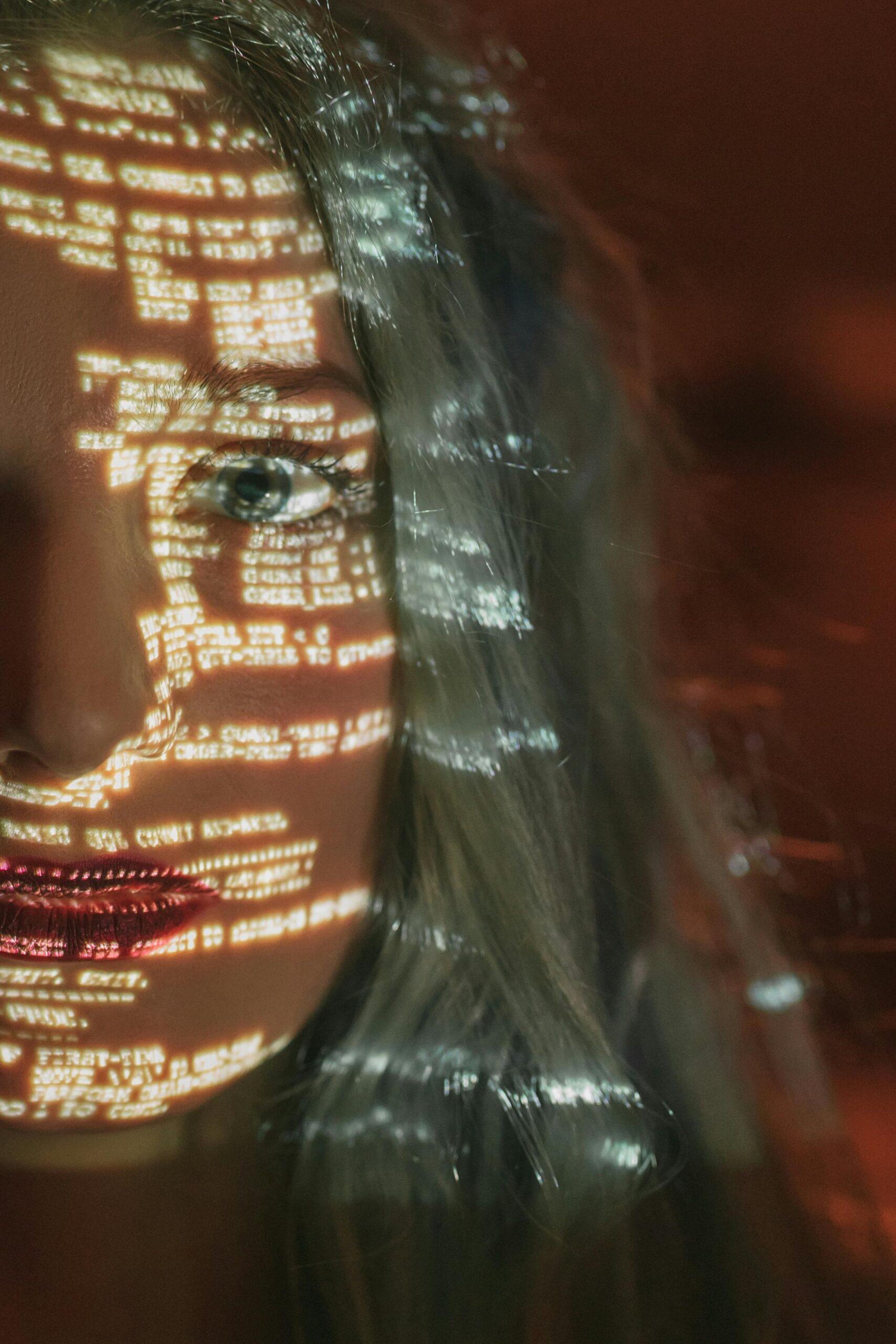Introduction: A New Era of Human Evolution
Humanity stands on the cusp of an evolutionary leap — not through natural selection, but by technological intervention. Artificial intelligence (AI) is not just changing how we work or interact; it’s fundamentally transforming what it means to be human. One of the most profound ways this is happening is through brain-computer interfaces (BCIs) — technologies that create direct communication pathways between our brains and external devices.
In this article, we’ll dive deep into how AI is reshaping human evolution, enhancing cognition, enabling human-machine symbiosis, and opening doors to a future where man and machine may eventually merge.
Table of Contents
-
The Evolution of Human Intelligence
-
What Are Brain-Computer Interfaces?
-
The Role of AI in BCIs
-
Enhancing Human Cognition Through AI
-
AI and the Next Step in Evolution: Neuroplasticity & Adaptation
-
The Rise of Human-AI Symbiosis
-
Ethical and Societal Considerations
-
Real-World Applications: Healthcare, Communication, and Beyond
-
The Future: Digital Immortality and Superintelligence
1. The Evolution of Human Intelligence
For thousands of years, human evolution was guided by biology. But the 21st century marks a shift: we’re now redesigning ourselves. With genetic editing, neuro-enhancement, and AI-powered interfaces, we’re entering a post-biological phase of evolution. Unlike the slow process of natural evolution, AI is accelerating this transformation at an exponential pace.
Evolution today is not just physical — it’s cognitive, digital, and increasingly artificial.
2. What Are Brain-Computer Interfaces?
Brain-computer interfaces (BCIs) are systems that allow direct communication between the brain and external devices. They translate neural signals into digital commands, enabling people to control computers, prosthetics, or even robotic limbs just by thinking.
While BCIs are not new (the first prototypes emerged in the 1970s), their capabilities have exploded recently, thanks to AI and machine learning.
Types of BCIs:
-
Invasive BCIs (implanted directly into the brain)
-
Non-invasive BCIs (like EEG headsets)
-
Hybrid BCIs (combining neural data with biometric sensors)
With companies like Neuralink, Synchron, and Kernel at the forefront, AI-driven BCIs are shifting from science fiction to science fact.
3. The Role of AI in BCIs
Without AI, BCIs would be like static radios—unable to decode the complex, ever-changing signals of the human brain. AI is the translator that makes brain signals actionable.
How AI Powers BCIs:
-
Signal decoding: AI interprets raw brainwave patterns into commands.
-
Personalization: Machine learning adapts to an individual’s neural patterns.
-
Real-time response: AI systems provide faster, more intuitive feedback loops.
-
Error correction: Deep learning improves accuracy by learning from past inputs.
In essence, AI doesn’t just read your thoughts—it learns how you think.
4. Enhancing Human Cognition Through AI
Imagine studying for an exam and having AI-enhanced neural tools suggest the best way to retain information. Or overcoming memory loss by restoring neural pathways. This isn’t futuristic fiction — it’s happening.
Key Cognitive Enhancements Enabled by AI:
-
Neurofeedback training: Helps users control brain activity for focus and stress.
-
Memory augmentation: AI BCIs store and retrieve neural information.
-
Language translation: Real-time mental-to-verbal translation across languages.
-
Thought-based computing: Control devices and apps with mental commands.
As AI bridges the gap between thought and action, we’re unlocking a new dimension of intelligence.
5. AI and the Next Step in Evolution: Neuroplasticity & Adaptation
AI doesn’t just interface with the brain—it helps it grow.
Thanks to neuroplasticity, the brain’s ability to reorganize itself, AI-enhanced BCIs are training the brain in new ways. For stroke patients or those with spinal injuries, BCIs can reroute functions to healthy brain regions.
Neuro-adaptation in Action:
-
Rehabilitating lost motor skills
-
Creating new “brain maps” for digital control
-
Boosting attention and reaction speed
This adaptive feedback loop between AI and the brain is reshaping evolution in real-time.
6. The Rise of Human-AI Symbiosis
We’re entering an era of cognitive symbiosis — a partnership between humans and AI where both evolve together. As AI systems get smarter, so do we.
This goes beyond simple augmentation. With neuro-integrated systems, humans may soon:
-
Connect minds digitally
-
Share experiences without speech
-
Form group intelligence networks
The dream? Collective intelligence, where humans and AIs form a hybrid consciousness. This is not just evolution — it’s co-evolution.
7. Ethical and Societal Considerations
As with all powerful technologies, brain-AI integration comes with serious risks. The same tools that can empower can also control.
Key Ethical Concerns:
-
Privacy: Who owns your neural data?
-
Security: Can your brain be hacked?
-
Inequality: Will only the rich afford cognitive upgrades?
-
Autonomy: If AI predicts your thoughts, are they still your own?
Governments, scientists, and ethicists must work together to create responsible frameworks that protect human rights in the age of neural AI.
 8. Real-World Applications: Healthcare, Communication, and Beyond
8. Real-World Applications: Healthcare, Communication, and Beyond
BCIs and AI are already transforming lives — especially in healthcare.
Notable Applications:
-
Medical: Helping paralyzed patients move again
-
Mental health: AI-powered therapy through brain scans
-
Communication: Letting locked-in patients “speak” via thought
-
Gaming and VR: Controlling virtual worlds with your mind
-
Military and defense: Enhancing soldier performance
From the clinic to the battlefield, AI-BCI technology is revolutionizing human potential.
9. The Future: Digital Immortality and Superintelligence
What if you could upload your mind? Store your memories, personality, and consciousness in the cloud?
Some futurists believe digital immortality is coming — and AI is the key. With brain mapping, neural simulation, and quantum computing, we may one day emulate the human mind in full.
Others imagine AI-enhanced humans achieving superintelligence, surpassing any biological brain.
But will this still be you? Or a copy? That’s the philosophical frontier.
10. Conclusion: Are We Still Human?
AI is not just reshaping tools or technologies — it’s reshaping us. Through brain-computer interfaces, AI is blurring the line between biological and artificial, natural and engineered.
We are no longer passive passengers of evolution. With AI, we are its architects
11. The Global Race for Brain-AI Integration
Around the world, nations are investing heavily in brain-AI technology as a strategic priority. The neurotechnology race is already underway, and much like the space race of the 20th century, the winners could redefine global power.
Leading Countries in AI-BCI Development:
-
United States: Companies like Neuralink and DARPA-funded projects are spearheading innovations.
-
China: The Chinese government has prioritized neuro-AI under its “Made in China 2025” plan, combining state funding with advanced AI labs.
-
Europe: The Human Brain Project aims to digitally simulate the entire human brain for AI collaboration and disease research.
-
India & Japan: Emerging hubs for affordable neurotech and wearable BCI devices focused on education and health.
This surge is not just about medical breakthroughs—it’s about control over the next evolutionary platform. Just as smartphones changed geopolitics and culture, brain-AI tech may shift the balance of economic and social influence.
12. Human Identity in a Post-Biological World
One of the most profound implications of AI and BCIs is the redefinition of human identity. When thoughts can be shared, memories recorded, and intelligence enhanced, how do we define individual consciousness?
Will we still be “us” if:
-
Our memory is stored in the cloud?
-
Our decisions are guided by predictive AI?
-
Our thoughts are translated before we speak them?
This challenges everything from philosophy and psychology to religion and human rights.
Some experts propose a new term — post-human — to describe a being whose cognitive, emotional, or physical capabilities far surpass biological norms due to AI integration.
13. Will AI Create a New Class Divide?
The integration of AI and BCIs may also create a new form of inequality: the neuro-elite vs. the cognitively unenhanced.
If only a small segment of society can afford neural upgrades or AI-boosted intelligence, it could:
-
Deepen educational and job inequality
-
Lead to new forms of social discrimination
-
Challenge democracy, as enhanced individuals influence decision-making
To prevent this, there must be a push for ethical accessibility, public policy, and perhaps even the classification of certain neuro-enhancements as human rights.
14. Human-AI Empathy: A Two-Way Street
Interestingly, AI is not just helping humans understand machines — it’s also helping machines understand humans.
Advanced emotion-detection AI integrated with neural data can interpret:
-
Mood changes
-
Stress levels
-
Emotional intent
This makes future BCIs not just intelligent, but empathetic. Imagine a virtual assistant that knows when you’re feeling anxious before you do — and adapts your work, environment, or notifications accordingly.
Such emotional AI could revolutionize:
-
Mental health care
-
Human-robot relationships
-
Personalized education
In essence, AI may not just amplify our thoughts, but also help us become more emotionally intelligent.
 15. Final Thought: Humanity’s Greatest Experiment
15. Final Thought: Humanity’s Greatest Experiment
As we continue to blend mind with machine, we’re not just enhancing ourselves — we’re entering humanity’s greatest experiment. The results could be breathtaking: disease eradicated, intelligence amplified, communication revolutionized.
But it could also go wrong — increasing surveillance, eroding privacy, or fundamentally altering who we are.
The future is neither utopia nor dystopia — it’s a choice.
And right now, we have the opportunity to shape that future in a way that enhances not only our intellect, but our humanity.






